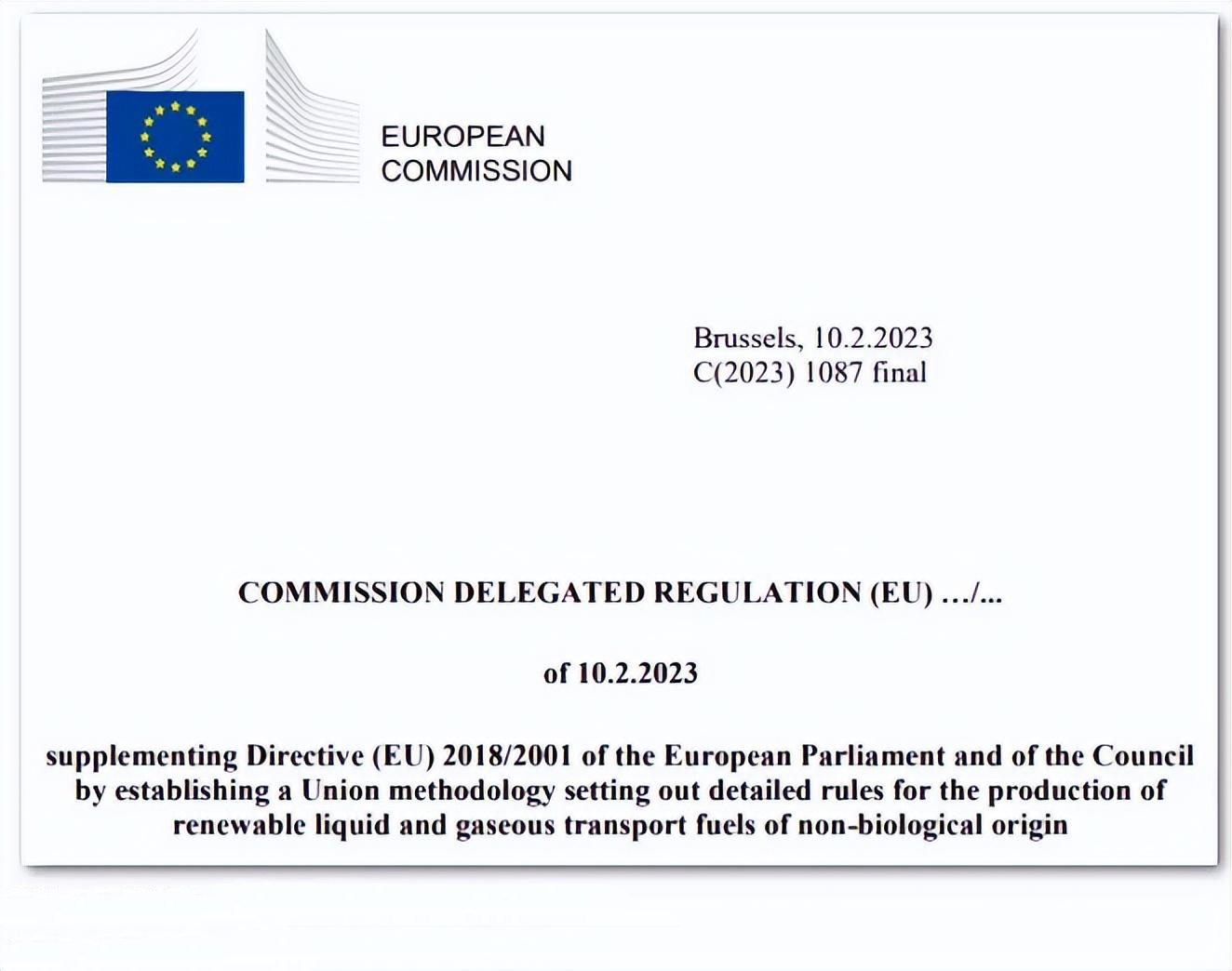- English
- Español
- Português
- русский
- Français
- 日本語
- Deutsch
- tiếng Việt
- Italiano
- Nederlands
- ภาษาไทย
- Polski
- 한국어
- Svenska
- magyar
- Malay
- বাংলা ভাষার
- Dansk
- Suomi
- हिन्दी
- Pilipino
- Türkçe
- Gaeilge
- العربية
- Indonesia
- Norsk
- تمل
- český
- ελληνικά
- український
- Javanese
- فارسی
- தமிழ்
- తెలుగు
- नेपाली
- Burmese
- български
- ລາວ
- Latine
- Қазақша
- Euskal
- Azərbaycan
- Slovenský jazyk
- Македонски
- Lietuvos
- Eesti Keel
- Română
- Slovenski
- मराठी
- Srpski језик
Content of two enabling Acts required by the Renewable Energy Directive (RED II) adopted by the European Union (I)
2023-02-21
According to a statement from the European Commission, the first enabling Act defines the necessary conditions for hydrogen, hydrogen-based fuels or other energy carriers to be classified as renewable fuels of non-biological origin (RFNBO). The bill clarifies the principle of hydrogen "additionality" set out in the EU Renewable Energy Directive, which means that electrolytic cells producing hydrogen must be connected to new renewable electricity production. This principle of additionality is now defined as "renewable energy projects that come into operation no earlier than 36 months in advance of facilities producing hydrogen and its derivatives". The principle aims to ensure that the generation of renewable hydrogen incentivises an increase in the amount of renewable energy available to the grid compared to what is already available. In this way, hydrogen production will support decarbonization and complement electrification efforts, while avoiding putting pressure on power generation.

The European Commission expects electricity demand for hydrogen production to increase by 2030 with the large-scale deployment of large electrolytic cells. To achieve REPowerEU's ambition of producing 10 million tonnes of renewable fuel from non-biological sources by 2030, the EU will need around 500 TWh of renewable electricity, which is equivalent to 14% of the EU's total energy consumption by then. This goal is reflected in the commission's proposal to raise the renewable energy target to 45% by 2030.
The first enabling Act also sets out the different ways in which producers can demonstrate that renewable electricity used to produce hydrogen complies with the additionality rule. It further introduces standards designed to ensure that renewable hydrogen is produced only when and where there is sufficient renewable energy (called temporal and geographic relevance). To take into account existing investment commitments and to allow the sector to adapt to the new framework, the rules will be phased in gradually and are designed to become more stringent over time.
The European Union's draft authorisation bill last year required an hourly correlation between renewable electricity supply and use, meaning that producers would have to prove hourly that the electricity used in their cells came from new renewable sources.
The European Parliament rejected the controversial hourly link in September 2022 after the EU Hydrogen trade body and the hydrogen industry, led by the Council for Renewable Hydrogen Energy, said it was unworkable and would drive up EU green hydrogen costs.
This time, the commission's authorisation bill compromises these two positions: hydrogen producers will be able to match their hydrogen production with renewable energy they have signed up for on a monthly basis until January 1, 2030, and thereafter only accept hourly links. In addition, the rule sets a transition phase, allowing green hydrogen projects operating by the end of 2027 to be exempt from the additionality provision until 2038. This transition period corresponds to the period when the cell expands and enters the market. However, from 1 July 2027, member states have the option of introducing stricter time-dependency rules.
With regard to geographical relevance, the Act states that renewable energy plants and electrolytic cells producing hydrogen are placed in the same tender area, which is defined as the largest geographical area (usually a national border) in which market participants can exchange energy without capacity allocation. The Commission said this was to ensure that there was no grid congestion between the cells that produce the renewable hydrogen and the renewable power units, and that it was appropriate to require both units to be in the same tender area. The same rules apply to green hydrogen imported into the EU and implemented through the certification scheme.





